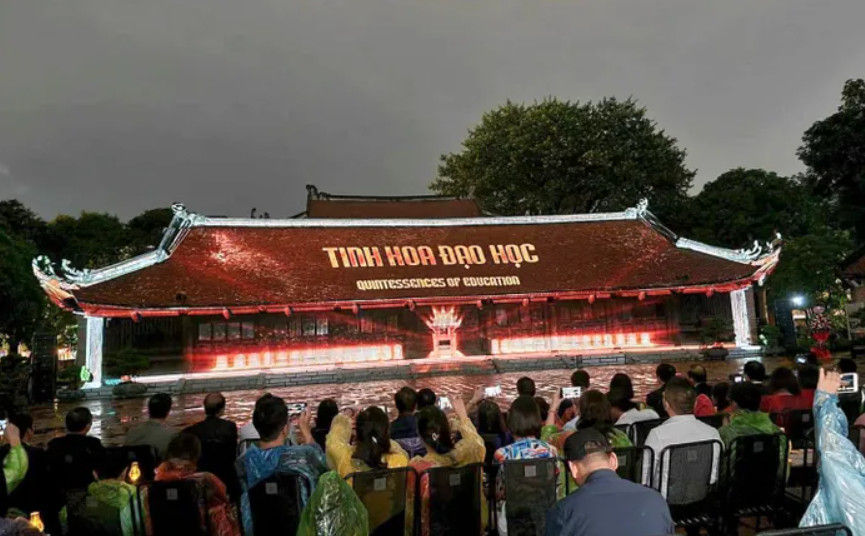Rising Entrance Charges for Heritage Sites and Scenic Spots in Hanoi
- vietnam4seasons

- Dec 18, 2023
- 3 min read
In a significant development on December 6th, within the framework of the 14th session of the 16th People's Council of Hanoi, the municipal People's Council approved a resolution amending the regulations on entrance fees for heritage sites, scenic spots, and cultural monuments within the city. This decision revises the provisions previously outlined in Resolution No. 06/2020/NQ-HDND. The resolution signals a notable change in the cost structure for visiting Hanoi's iconic historical landmarks, reflecting the city's efforts to manage and maintain these cultural treasures. This move is expected to impact tourists and locals alike as entrance charges experience an upward adjustment across the city's notable attractions.

Entrance Fees Before Change
The table below illustrates the entrance fees for various heritage sites in Hanoi before the recent adjustments, in accordance with the regulations set forth by Resolution 06/2020/NQ-HĐND of the municipal People's Council governing the fees and charges within the city.
Heritage Site | Entrance Fee Before Change (VND) |
Temple of Literature | 30,000 |
Ngoc Son Temple | 30,000 |
Hoa Lo prison | 30,000 |
Thang Long Imperial Citadel Center | 30,000 |
Co Loa | 10,000 |
Huong pagoda (highest: 78,000) | 78,000 |
Entrance Fees After Change
The following table provides a comprehensive overview of the revised entrance fees for various historical and cultural sites in Hanoi, reflecting the recent adjustments aimed at enhancing the financial sustainability and management of these cherished landmarks.
Heritage Site | Entrance Fee After Change (VND) |
Temple of Literature | 70,000 |
Ngoc Son Temple | 50,000 |
Hoa Lo prison | 50,000 |
Thang Long Imperial Citadel Center | 100,000 |
Co Loa | 30,000 |
Perfume pagoda | 120,000 (including 2,000 insurance for tourists) |
Quan Thanh Temple | 10,000 |
Duong Lam ancient village | 20,000 |
Thay Pagoda | 10,000 |
Tay Phuong Pagoda | 10,000 |

Management of Fees
With the recent resolution passed by the Hanoi People's Council, the majority of the entrance fees for historical and cultural landmarks across the city have witnessed an increase. Regarding the management of fee utilization, the resolution stipulates specific guidelines. For heritage sites like Temple of Literature, Hoa Lo Prison, the Management Board of Monuments and Scenic Spots, and sites under the Preservation Center of Thang Long Imperial Citadel (including the Imperial Citadel Area and the Co Loa site), the fee-collecting units retain 90% of the fees, contributing 10% to the state budget.
For Perfume Pagoda, the fee-collecting unit contributes 85% to the state budget (covering funds for site preservation, restoration, and organizing festivals for the festival organizing committee and Huong Son commune), leaving 15% with the collecting unit. As for Quan Thanh Temple, Thay Pagoda, Tay Phuong Pagoda, 100% of the entrance fees are remitted to the state budget. In the case of the ancient village of Duong Lam, the entirety of the entrance fees, 100%, is retained by the fee-collecting unit. This structured approach aims to ensure both the financial sustainability of these heritage sites and their effective contribution to state funds.
Additional Regulations
The resolution introduces additional regulations to refine the fee structure further and enhance accessibility to cultural heritage sites.
Notably, it specifies certain exempt days, exempting all heritage sites from entrance fees on Cultural Heritage Day (November 23rd).
Additionally, no fees will be charged on the commemoration day of Saint Giong on the 20th day of the eighth lunar month and on the first day of each lunar month at Đền Ngọc Sơn.
Further exemptions include the 30th day of the lunar twelfth month and the first and second days of the Lunar New Year, as well as on Buddha's Birthday (the 15th day of the fourth lunar month) at Perfume Pagoda.
Similarly, no fees will be levied on the 30th day of the lunar twelfth month and the first and second days of the Lunar New Year at Quan Thanh Temple, Tay Phuong Pagoda, Thay Pagoda, and the ancient village of Duong Lam.
These additional regulations aim to promote cultural engagement and facilitate public participation in heritage-related events on designated days throughout the year.

The meaning of this change
The issuance of the resolution amending the regulations on entrance fees for historical and scenic sites in Hanoi establishes a cohesive and unified mechanism for organizing and implementing these changes. This initiative creates favorable conditions to facilitate the execution of programs and plans, ensuring an autonomous framework for public sector entities. The aim is to streamline activities, align them with practical realities, reduce state budget expenditures for public sector activities, and enhance the autonomy of these entities. This strategic shift serves as a motivation to drive the development of public service offerings, catering more effectively to the needs of the public.
The delegation of autonomy and responsibility encompasses the execution of tasks, organizational structures, human resources, and finances, ultimately seeking to improve operational efficiency, budgetary savings, and the overall quality of public services. This change serves as a catalyst, encouraging officials and employees of these entities to actively strive for innovation and increased effectiveness in their professional activities. It aims to foster a proactive approach, bringing about continuous improvements and delivering ever-improving service quality to the public visiting historical sites.
Contact Vietnam4seasons Travel
Hotline: (+84) 398 573 689
WhatsApp: (+84) 398 573 689
Email: vietnam4seasons@gmail.com




Comments